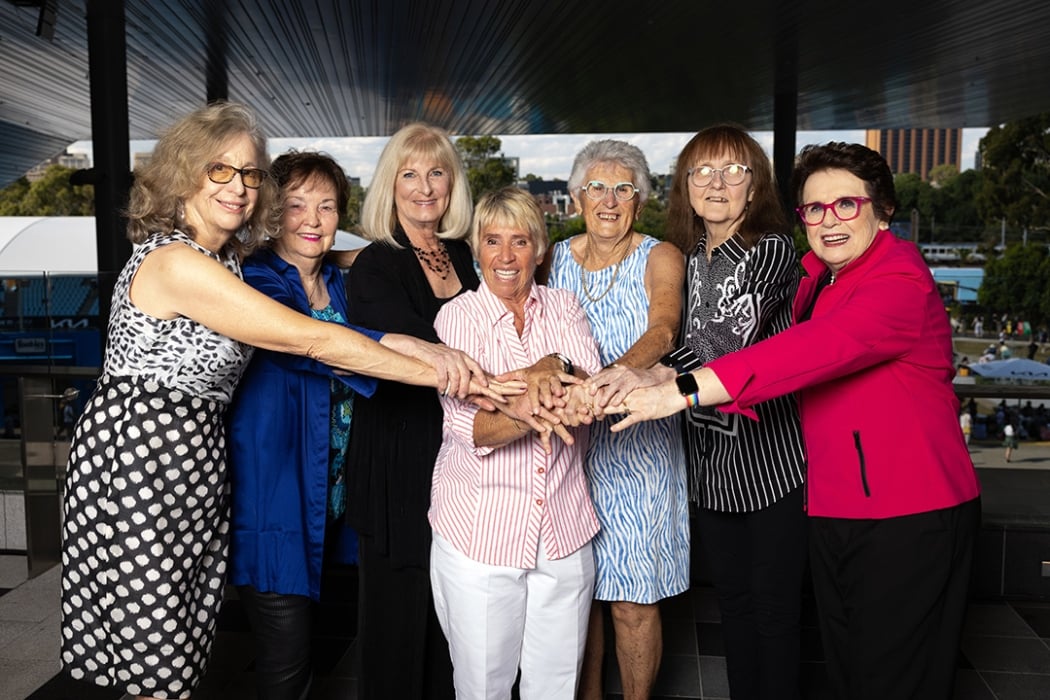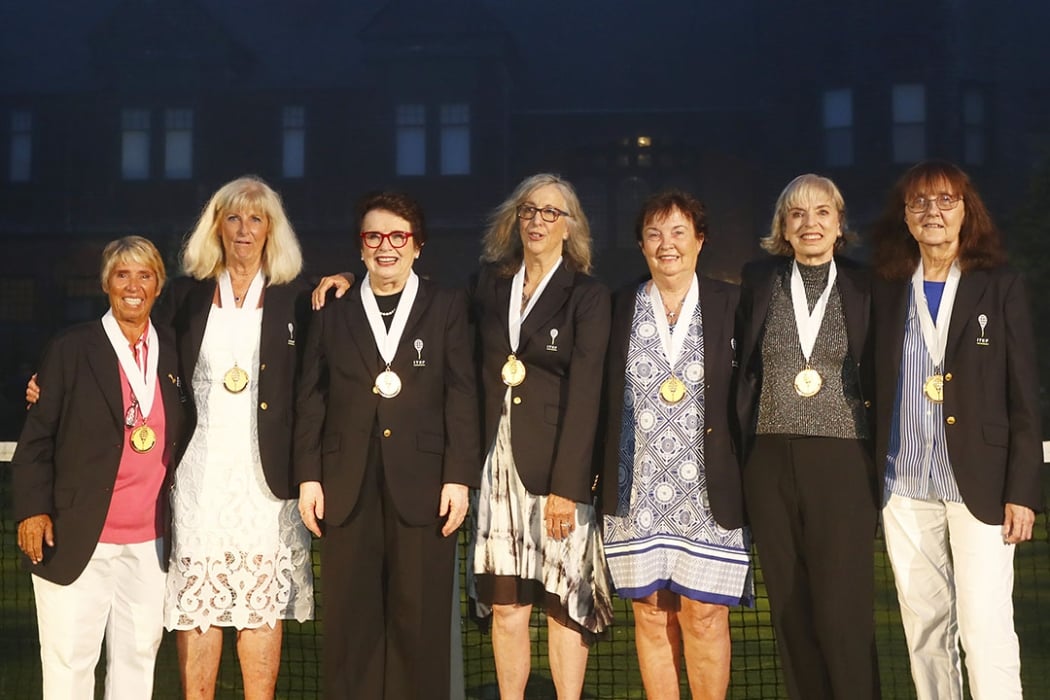A version of this article was first published on Tennismash.com in 2018, on the 50-year anniversary of Open tennis.
Australia was the birthplace of two of the world’s leading pioneers behind women’s professional sport, yet few Australians were aware of their contribution until recent years.
In 1970, Judy Dalton (née Tegart) and Kerry Reid (née Melville) joined seven American women – a group led by Billie Jean King and known as the Original 9 – to form a breakaway women’s tennis tour that later became the WTA as we know it today.
They were also excellent players.
Dalton reached the 1968 Wimbledon final and won nine Grand Slam doubles titles. Reid won Australian Open 1977 and was a US Open finalist in 1972. Both women peaked at world No.7; Reid was a top-10 stalwart for a decade. Both are enshrined in the Australian Tennis Hall of Fame.
They nevertheless possess a relatively low profile in Australia. Prefacing a 2017 interview with Dalton on ABC Radio, presenter Geoff Hutchison said: “The name Judy Dalton has perhaps been lost among the familiarity of names like Margaret Court and Evonne Goolagong.”
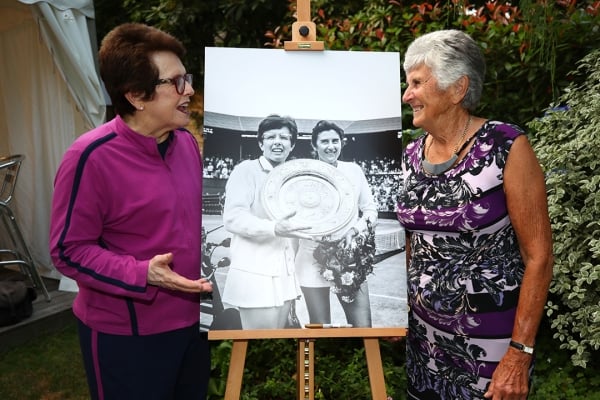
Reid now lives in South Carolina and is involved in the fly-fishing industry, quite disconnected from the sport that brought her so much success. Dalton lives in Melbourne and was president of the Fed Cup Foundation in Australia for over 30 years, an organisation established in 1974 to support women – either as players, coaches, officials or administrators – in tennis.
When reflecting on her tennis achievements, Dalton describes her part in the Original 9 as a career “pinnacle”. Reid expresses similar pride.
Boycotts, bans and belief
A quick backgrounder, for the uninitiated: following the introduction of ‘Open tennis’ in 1968, the Original 9 began to resent the growing inequity between men’s and women’s purses at professional tournaments.
The clincher came in 1970 with the distribution of prize money at an event in Los Angeles; the men’s champion was to receive eight times that of the women’s winner.
Led by King, the group boycotted that tournament, formed their own tour and signed $1 contracts with Gladys Heldman (publisher of World Tennis Magazine) to compete at the inaugural women’s-only invitational event in Houston, despite facing the threat of Grand Slam bans by their national federations.
Neither Dalton nor Reid see themselves as feminists but to “take the plunge”, as Reid termed it, amid the threat of competitive bans and plenty of skepticism – even derision, in some quarters – required a strong sense of belief, vision and social justice.
Dalton had already faced her own perceived injustice. In 1962, then the country’s third-ranked female player behind Margaret Court and Lesley Bowrey, she was omitted from an Australian international touring team to make way for a lower-ranked player.
“I just said, well I will go it on my own and I will show you (the Lawn Tennis Association of Australia) that I can do it,” Dalton recalled. “And so basically from ’62 I went out on my own and proved I could do things without their help.”
Reid, 10 years younger, looked up to her compatriot. She felt that if Dalton, King and co. were putting their reputations and careers on the line in 1970, she felt she should too.
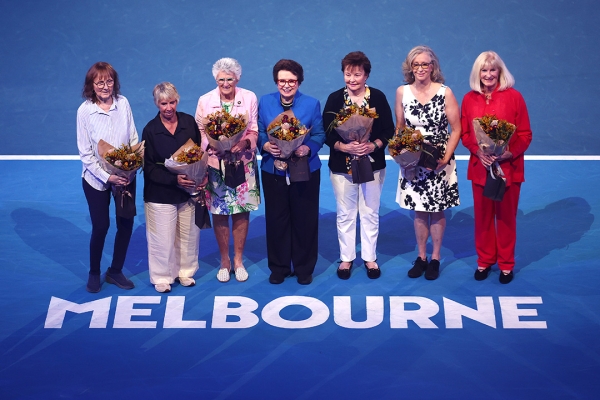
Her parents were worried about the unchartered territory the then-23-year-old was stepping into, especially given the LTAA’s threat of bans. “Gradually we started getting the tour going and they could see it was growing,” Reid said. “They (my parents) never told me, ‘Don’t do it.’ I’d already done it anyway (laughter). They were supportive.”
At the time, the Original 9’s actions were revolutionary for female athletes. “We were a bit like the second wave of the suffragates,” Dalton said.
Their efforts were part of a movement sweeping the US that resulted in several victories for gender equality, but the Original 9 story – and, more importantly, the role Dalton and Reid played within it – gained little traction in Australia.
Any media interest centred on the repercussions faced by Dalton and Reid. Harsher than the US federation were on the Americans in the group, the LTAA deemed the women “not in good standing” with the federation for their decision to play on the fledgling Virginia Slims women’s circuit, which clashed with Australian summer tournaments.
The ban was expected to extend to the 1971 Grand Slams until the ITF cleared the Original 9 to compete at Roland Garros, Wimbledon and the US Open, as they were not “contract professionals”; the symbolic $1 contracts signed in September 1970 were not deemed official enough.
But Dalton and Reid – and another Aussie who had since joined the women’s tour, Lesley Hunt – faced more LTAA sanctions for wanting to play tournaments in New Zealand in December 1971, which were linked with the Virginia Slims tour and ran parallel to the Australian tournaments.
The ban eventually ended on 5 January 1972. “The girls are entitled to earn a living from tennis and, at the moment, Australia cannot provide enough prize money,” Wayne Reid, then president of the LTAA, told The Age.
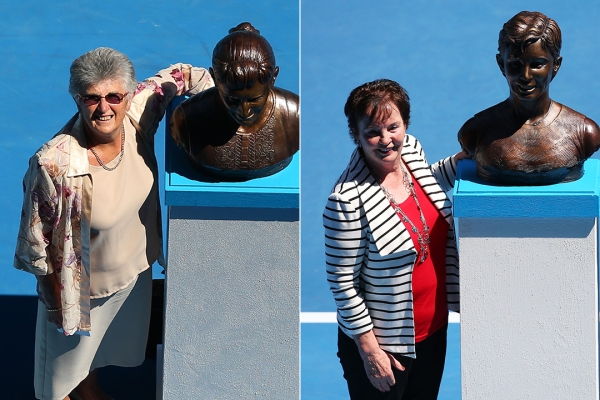
Aside from press coverage those bans generated, the political statement made by Dalton and Reid was met with apathy in their homeland. “I just remember there wasn’t all that much publicity about it,” Reid said.
Dalton added: “We could never have done (what we did in the US) in Australia, because of the attitude of the general public. I think Australia is much more of a chauvinist country. If you think it’s ‘boysie’ now, it was 150 times worse then.
“Even though we had the No.1 player in the world in Margaret Court, it wouldn’t have made any difference. The general public would never have come (to watch us).”
Financial gains
Yet based in the United States, the women’s tour took off. In its first full year in 1971, King earned more than $100,000, becoming the first female athlete to earn six figures in a single season.
In 1973 she defeated Bobby Riggs in the seminal “Battle of the Sexes” match, the same year the US Open made the groundbreaking decision to award equal prize money to male and female players.
Dalton recalls the money she earned while competing on the tour helped her and her husband pay off their home. “I certainly wasn’t the primary breadwinner – David was. But the money that I made helped pay it off that much quicker. When we did, the bank manager said he’d never had anybody pay it off that quick,” she laughed.
“I suppose by comparison to this day and age it was a fair bit of money. I was lucky also – the bank manager let me have my own account. That was just unheard of. Women weren’t allowed to have a bank account of their own.”
Reid laughs when she says she “goes down in history” as part of the Original 9. Yet that’s exactly where she, Dalton and the seven other members of the trailblazing group have ended up.
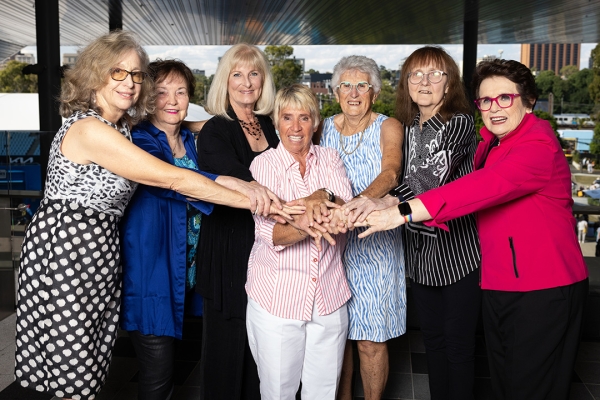
“Although we were a small group, we were a very strong group, really together … we didn’t really think it wouldn’t turn out fine,” Reid said.
“We were kind of shocked when we got banned. But now looking back on it, philosophically, I can see it was a big deal and they (the national federations) didn’t know quite how to handle it.
“Really proud of it, that we did that. That I stood up and that I was one of those girls. My daughters are very proud.”
